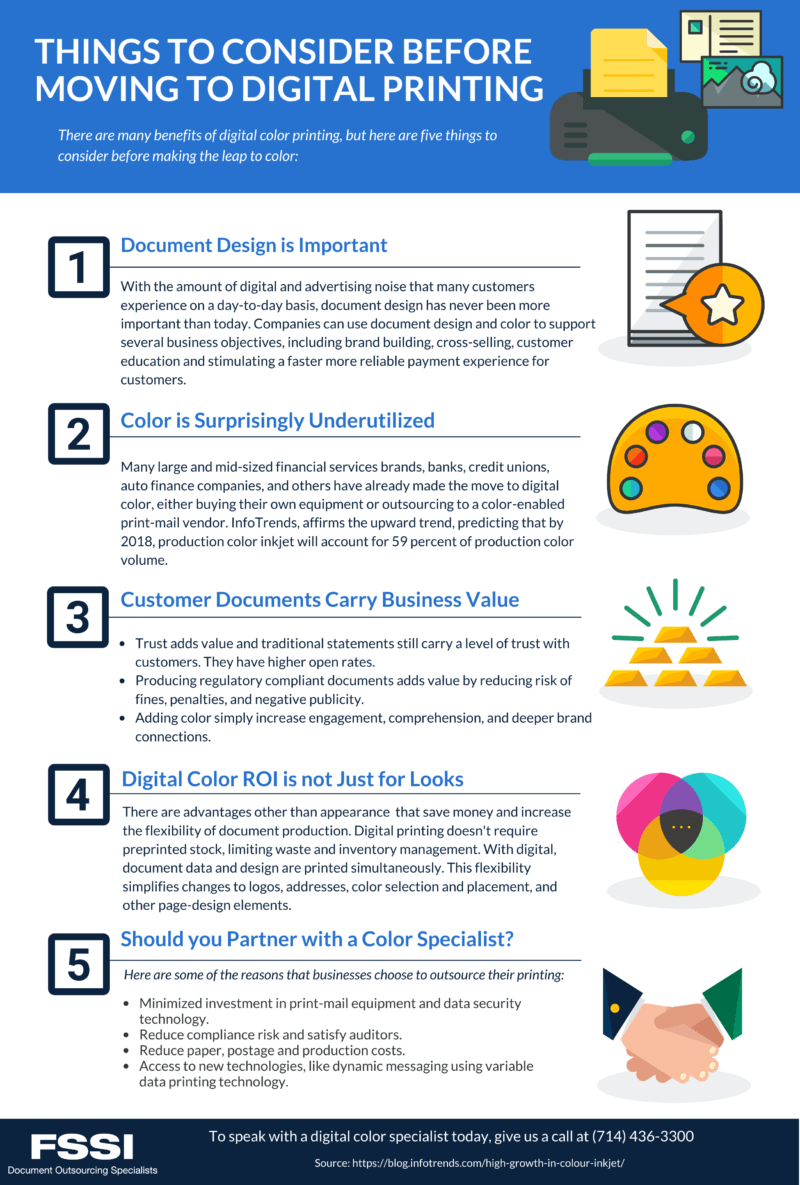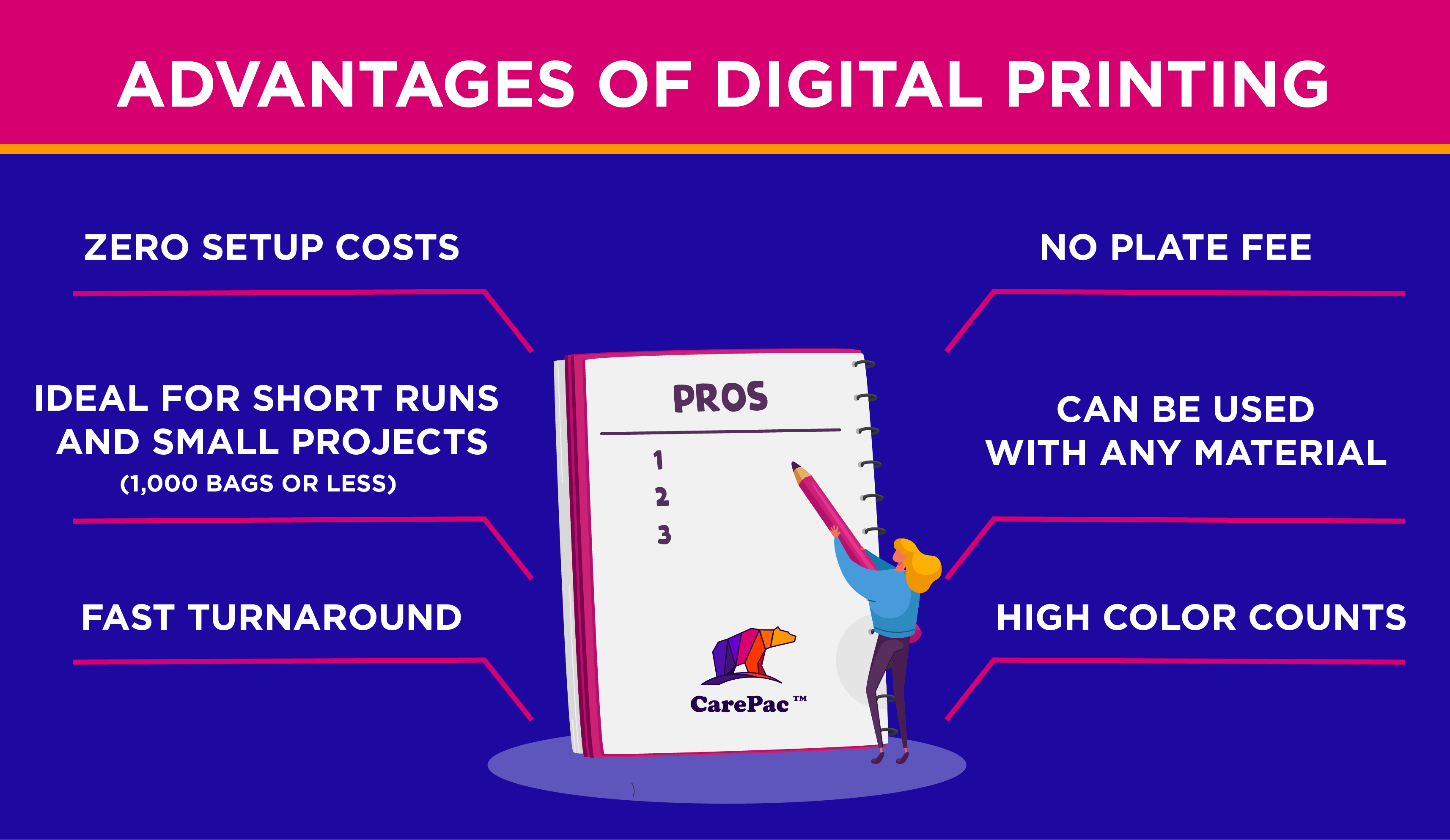10 Simple Techniques For Digital Printing
10 Simple Techniques For Digital Printing
Blog Article
Some Ideas on Digital Printing You Should Know
Table of ContentsNot known Incorrect Statements About Digital Printing Digital Printing - QuestionsExamine This Report on Digital Printing3 Easy Facts About Digital Printing Described3 Simple Techniques For Digital PrintingThings about Digital Printing
Variable data printing, such as direct mail with individualized codes and addresses, is ideally fit for electronic printing. Digital quick printing only needs four actions of layout, evaluation, printing and binding to obtain every little thing done. Digital quick printing has an unparalleled advantage: print on need.According to PMMI, electronic printing permits brand names and manufacturers to respond rapidly to customer demands while improving the supply chain, lowering warehousing expense and waste, and delighting in faster time to market. That all noises fantastic, but exactly how does this innovation do all that? The major differentiator of these technologies is that there are no set up fees and no plates with electronic printing.
Not known Facts About Digital Printing
According to Wikipedia, the best distinction between digital printing and standard approaches such as lithography, flexography, gravure, or letterpress - Digital Printing is that there is no demand to replace printing plates in electronic printing, whereas in these analog printing techniques the plates are consistently changed. This results in quicker turnaround time and reduces cost when using electronic printing.
Fast production means getting your item to market much faster. It also means it's simpler and faster to make adjustments later, when you transform a recipe, include a SKU, or produce seasonal packaging. Digital printing is highly adaptable, so it's easy to make modifications to the package style promptly. All of it goes back to home plates.
With traditional printing approaches, short-run printing is just not feasible. Because a great style can make or break your product, electronic printing constantly develops top quality, clear and colorful graphics each time.
Digital printing is the procedure of printing digital-based images directly onto a variety of media substratums. There is no demand for a printing plate, unlike with balanced out printing. Digital data such as PDFs or desktop posting documents can be sent directly to the electronic printing press to publish theoretically, photo paper, canvas, fabric, synthetics, cardstock and other substratums.
Some Known Facts About Digital Printing.
According to PMMI, electronic printing permits brand names and suppliers to react swiftly to consumer demands while boosting the supply chain, minimizing warehousing cost and waste, and enjoying faster time to market. That all noises excellent, yet just how does this innovation do all that? The significant differentiator of these technologies is that there are no set up charges and no plates with electronic printing.
This results in quicker turnaround time and reduces cost when utilizing electronic printing.

Little Known Facts About Digital Printing.
With conventional printing methods, short-run printing is just not feasible. Due to the fact that a great style can make or damage your product, electronic printing regularly develops high-grade, clear and vibrant graphics each time.

According to PMMI, digital printing enables brand names and makers to respond swiftly to customer needs while improving the supply chain, lowering warehousing expense and waste, and enjoying faster time to market. That all noises terrific, but just how does this innovation do all that? The major differentiator of these modern technologies is that there are no set up costs and no plates with electronic printing.
All About Digital Printing
According to Wikipedia, the best distinction in between electronic printing and traditional techniques such as lithography, flexography, gravure, or letterpress is that there is no requirement to change printing plates in electronic printing, whereas in these analog printing techniques home plates are consistently changed. This causes quicker turn-around time and reduces price when making use of digital printing.
Speedy production suggests obtaining your product to market quicker. It additionally suggests it's less complicated and faster to make adjustments in the future, when you alter a recipe, include a SKU, or produce seasonal packaging. Digital printing is highly flexible, so it's very easy to visit their website make modifications to the bundle design quickly. It all returns to home plates.

Digital Printing Things To Know Before You Get This
Digital printing is the her latest blog procedure of printing digital-based images straight onto a variety of media substrates. There is no need for a printing plate, unlike with offset printing. Digital data such as PDFs or desktop posting data can be sent directly to the electronic printing machine to print on paper, image paper, canvas, material, synthetics, cardstock and various other substrates.
Report this page